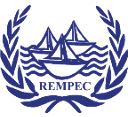Mediterranean ship emission control area passes next step – Dec 13, 2021
The 22nd Contracting Parties to the Barcelona Convention endorsed a join proposal to designate Mediterranean SOX control area.
A proposal to designate the entire Mediterranean Sea as sulphur oxides (SOx) emission control area (ECA) under the International Convention for the Prevention of Pollution from Ships (MARPOL) has been endorsed by a meeting of Mediterranean country representatives.
A Mediterranean ECA would imply a reduction to 0.1% m/m for the sulphur content of fuel oil used on board ships in the area, against the mandatory global limit of 0.50%.
The Mediterranean is a key route for shipping, with both internal shipping traffic and acting as an through route for ships travelling along the Suez-Gibraltar route and entering the basin from the Bosporus Strait. Cutting the sulphur limit would therefore have a significant impact, improving air quality for entire Mediterranean Sea, particularly coastal areas.
The joint and coordinated proposal on the designation of the Med SOX ECA was endorsed by the 22nd Contracting Parties to the Barcelona Convention (COP22), which met in Antalya, Türkiye from 6 to 10 December 2021. The meeting was attended by heads of states and high-level representatives from Mediterranean littoral countries.
The Regional Marine Pollution Emergency Response Centre for the Mediterranean Sea (REMPEC), administered by the International Maritime Organization (IMO), assists Mediterranean coastal states to build national capacities to prevent marine pollution from ships and act in the event of major incidents. REMPEC was established under the Mediterranean Action Plan (MAP) to support environmental protection of the Mediterranean Sea, adopted by Contracting Parties to the Barcelona Convention for the protection of the Mediterranean.
The next step in designating the Med SOX ECA is the submission of the joint proposal to the 78th Session of the IMO Marine Environment Protection Committee (scheduled for 6-10 June 2022) for consideration.
This could see the emission control area enter into effect by 1 January 2025.
There are currently four other SOX ECAs worldwide: The Baltic Sea area; the North Sea area; The North American area; and the United States Caribbean Sea area.
Mediterranean Strategy 2022-2031 endorsed
COP22 also adopted the Mediterranean Strategy for the Prevention, Preparedness, and Response to Marine Pollution from Ships (2022-2031). This has a vision to create "A clean and healthy Mediterranean marine and coastal environment with a sustainable and pollution free maritime sector, supported by a rigorous enforcement system and strengthened multi-sectoral cooperation, for the benefit of present and future generations".
Seven strategic objectives for the next ten years are set out:
- Prevent, prepare for, and respond to operational, illegal and accidental oil and HNS pollution from ships
- Promote and support the development and implementation of innovative global solutions to mitigate and respond to climate change
- Reduce and monitor air emissions from ships to a level that is not harmful to the marine environment, or the health of the coastal population of the Mediterranean
- Prevent and reduce litter (in particular plastic) entering the marine environment from ships, in order to limit the environmental, health, and socio-economic impact of marine litter in the Mediterranean
- Eliminate the introduction of non-indigenous species by shipping activities
- Achieve a well-managed safe and pollution free Mediterranean, with integrated marine spatial planning and designation of special areas, where shipping activity has a limited impact upon the marine environment
- Identify and understand collectively emerging issues related to pollution from ships in the Mediterranean, and define required actions to address issues identified
Ballast Water Management Strategy endorsed
COP22 also adopted the Ballast Water Management Strategy for the Mediterranean Sea (2022-2027). This is aimed at establishing a framework for a regional harmonised approach in the Mediterranean on ships’ ballast water control and management, consistent with the requirements and standards of IMO’s Ballast Water Management Convention.
Guidelines for the conduct of environmental impact assessments (EIA) under the Offshore Protocol endorsed:
The guidelines for the conduct of EIA under the Offshore Protocol were adopted by the delegates of the COP 22. Taking into consideration different standards and guidelines developed over the years from a wide variety of industry, national, regional and international organisations, these guidalines will ensure harmonisation of regional practices for offshore activities in the Mediterranean, in line with the Protocol for the Protection of the Mediterranean Sea against Pollution Resulting from Exploration and Exploitation of the Continental Shelf and the Seabed and its Subsoil (the Offshore Protocol) and as required by Mediterranean Offshore Action Plan.
Amendments to the Annexes to the Offshore Protocol adopted
More than 25 years after the adoption of the Offshore Protocol in 1994, COP 22 delegates agreed on endorsing the Amendments to the Annexes to the Offshore Protocol setting forward the mechanism for the regular amendments to address regulatory, scientific and technical developments.
Read more:
- COP 22 adopts bold measures for the protection of the environment that can catalyze a green recovery in the Mediterranean
- UNEP MAP Event Page : 22nd Meeting of the Contracting Parties to the Barcelona Convention and its Protocols
- COP22 Host Country website
- IISD reporting services at COP22
- Follow @UNEPMAPNews and #COP22Med on Twitter
- More informations on Med Sox ECA project
MedSOxECA video:


